Dark-eyed Juncos are small songbirds that can be found in forest openings in the northern parts of North America and in forested mountains in the West. They are a common sight during the summer months, as up to 66% of all Dark-eyed Juncos nest in the boreal forests. However, during winter, they migrate south and can be found in most of the United States. These charming birds build open cup nests on the ground, often hidden in tall grass against or under a root ball or tree trunk. Interestingly, Dark-eyed Juncos do not use nest boxes, but they may even nest in undisturbed potted plants on the ground or hanging pots. The male juncos arrive on their territory before the females and start their singing performances in March and April. It is the females who choose the nest site and build the nest, typically well concealed on the ground. Both parents take turns feeding the nestlings and continue to do so for a couple of weeks after they leave the nest. While Dark-eyed Juncos are monogamous during the nesting season, they may mate with other juncos in neighboring territories. These delightful birds usually have two broods per year and may start breeding when they are just one year old. They lay 3-6 eggs, which are incubated by the female for 11-13 days before hatching. The young hatch naked and helpless, remaining in the nest for 10-13 days before fledging. Both parents diligently feed the nestlings until they’re ready to venture out. The juvenile plumage of Dark-eyed Juncos lasts for 2-3 months before molting into their adult plumage.
Dark-eyed Juncos nesting habits
Dark-eyed Juncos, commonly found in North America, exhibit interesting nesting habits that contribute to their successful reproduction. In this article, we will explore various aspects of their nesting behavior, including nest construction, nesting site selection, parental care, mating and breeding behavior, nest placement and characteristics, egg laying and incubation, nestling development and fledging, migration patterns, arrival and singing behavior of male juncos, nest site selection and building by female juncos, parental care and feeding of nestlings, and molting and transition to adult plumage.
Nest Construction
Dark-eyed Juncos build open cup nests on the ground, often in tall grass against or under a root ball or tree trunk. They do not use nest boxes but may nest in undisturbed potted plants on the ground or hanging pots. The nest construction is performed by the female junco, who chooses the materials and builds the nest using grass, twigs, leaves, and other plant materials. The nests are well-built and provide a comfortable and safe environment for the growing brood.
Nesting Site Selection
The selection of a suitable nesting site is crucial for the Dark-eyed Juncos. They prefer hidden and sheltered locations to protect their nest from predators. Nests are usually placed on the ground and are well hidden under roots or against tree trunks with overhanging shelter. This choice of nesting site ensures the safety and security of the brood during the vulnerable stages of nesting.
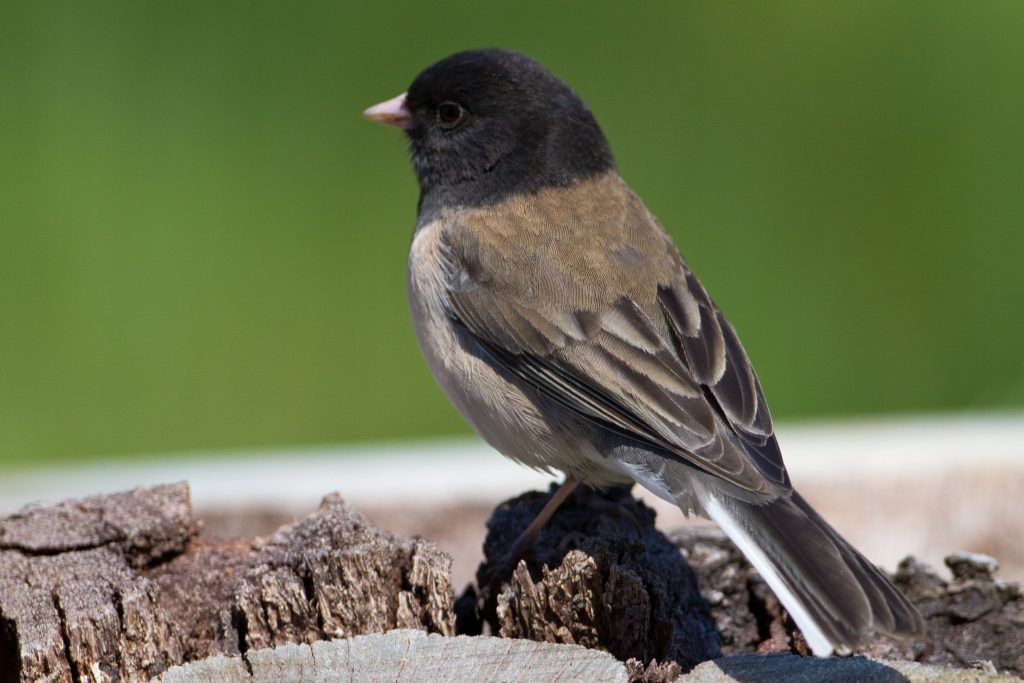
Parental Care
Both male and female Dark-eyed Juncos actively participate in parental care. They take turns incubating the eggs, with the female taking the majority of the responsibility. After hatching, both parents feed the nestlings and continue to do so for a couple of weeks even after they leave the nest. This dedicated parental care ensures the survival and healthy development of the young juncos.
Mating and Breeding Behavior
Dark-eyed Juncos exhibit monogamous behavior during the nesting season. However, they may engage in mating with other juncos in neighboring territories. This behavior allows for genetic diversity and increases the likelihood of successful reproduction. The juncos usually produce two broods per year and may even breed for the first time when they are just one year old, indicating their ability to reach sexual maturity at an early age.
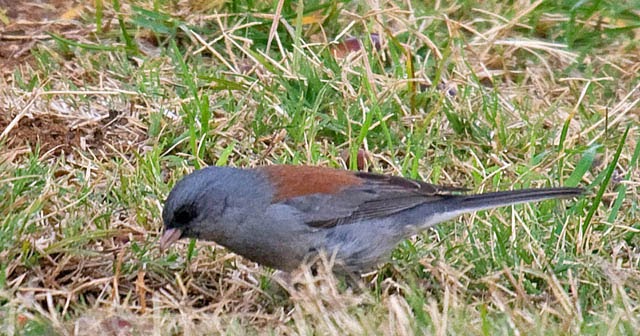
Nest Placement and Characteristics
The Dark-eyed Juncos prefer to place their nests on the ground. This choice of placement offers several advantages in terms of camouflage and protection. By hiding the nest under roots or against tree trunks, they achieve a level of concealment that decreases the chances of it being discovered by predators. Additionally, the nests are well-sheltered, providing a safe and secluded environment for the growing brood.
Egg Laying and Incubation
Dark-eyed Juncos typically lay 3-6 eggs, which are incubated by the female for 11-13 days before hatching. The eggs are laid sequentially, with one egg being laid per day until the clutch is complete. The female juncos meticulously incubate the eggs, ensuring they remain warm and protected. This incubation period is crucial for the development of the embryos inside the eggs.
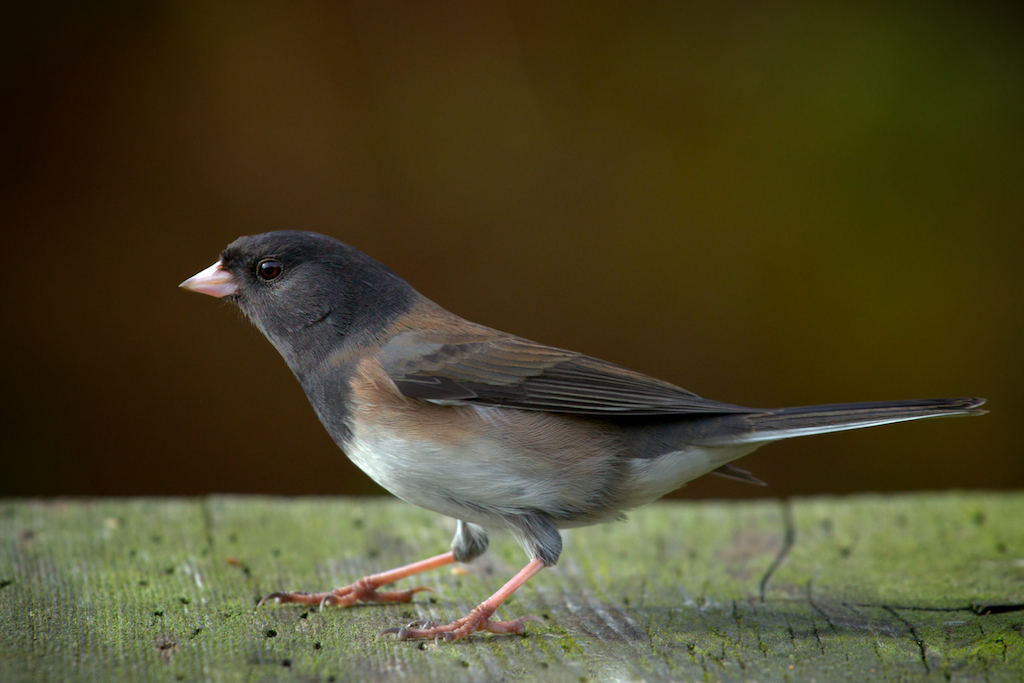
Hatching
After the incubation period, the eggs hatch, giving rise to naked and helpless nestlings. The hatching process is an exciting time, as the parents eagerly await the emergence of their young. The hatchlings rely entirely on their parents for warmth, protection, and nourishment during this vulnerable stage of their lives.
Nestling Development and Fledging
Dark-eyed Junco nestlings spend approximately 10-13 days in the nest before they fledge. During this nestling period, they grow rapidly under the attentive care of both parents. The nestlings are constantly fed by their parents, who diligently forage for food to provide for their young. As the nestlings mature, their feathers start to develop, and they gradually gain strength and coordination.
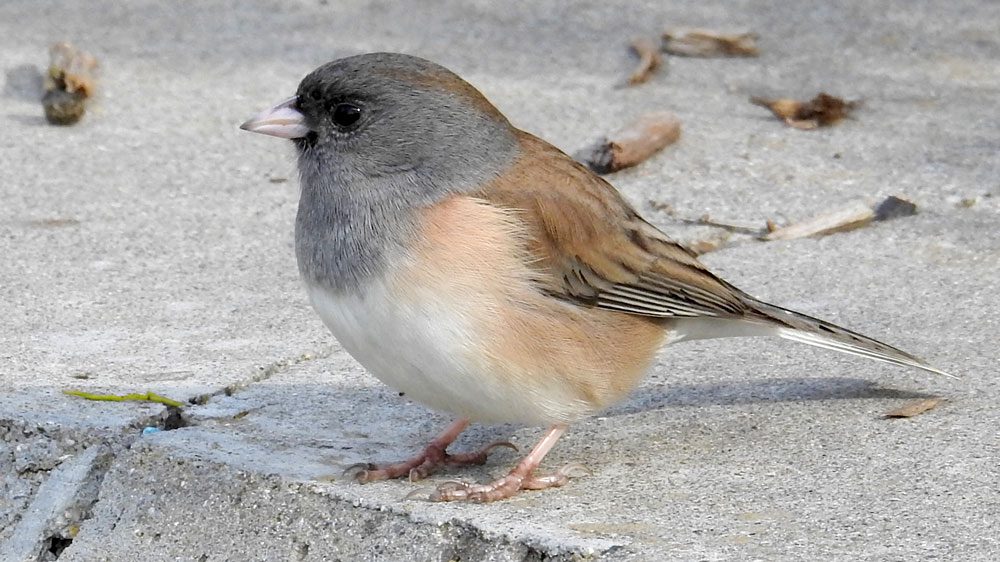
Transition to Juvenile Plumage
After leaving the nest, the juvenile Dark-eyed Juncos enter a phase known as the nestling period. During this time, their parents continue to provide them with food and guidance as they learn to fend for themselves. The nestlings go through a distinct molting process, shedding their downy feathers and transitioning into their juvenile plumage. This transition takes approximately 2-3 months and marks their progression towards adulthood.
Migration Patterns
Dark-eyed Juncos exhibit interesting migration patterns. During the summer, they reside in forest openings in northern parts of North America and forested mountains in the West. However, in winter, they embark on a southward migration, spreading across most of the United States. This migratory behavior allows the juncos to optimize their habitat and access food resources throughout the year.
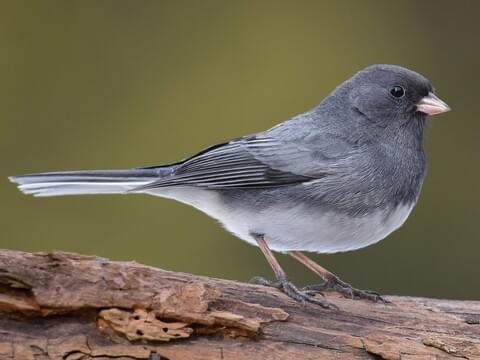
Male Juncos’ Arrival and Singing Behavior
Male Dark-eyed Juncos exhibit fascinating behavior upon arriving at their territories. They arrive before the females and establish their presence through singing. March and April mark the start of their melodious songs, which serve multiple purposes, including territorial defense and attracting potential mates. The male juncos’ early arrival and singing behavior contribute to their successful reproduction.
Female Juncos’ Nest Site Selection and Building
The Dark-eyed Junco females play a crucial role in nest site selection and building. They meticulously choose the perfect location for their nest, assessing factors such as concealment, protection, and accessibility to food sources. Once the site is chosen, the females construct the nest using various materials, creating a secure and comfortable environment for their young.
Parental Care and Feeding of Nestlings
Both male and female Dark-eyed Juncos actively participate in parental care, including the feeding of nestlings. They tirelessly forage for insects, seeds, and other food sources to provide for their growing brood. This dedicated feeding behavior ensures that the nestlings receive an adequate and nutritious diet, facilitating their healthy development and growth.
Molting and Transition to Adult Plumage
As the juvenile Dark-eyed Juncos reach maturity, they undergo a molting process. During this period, their feathers gradually shed, making way for the development of their adult plumage. The molting process takes time and requires an abundance of nutrients to support feather growth. Once the transition is complete, the juncos proudly showcase their vibrant and distinctive adult plumage.
Dark-eyed Juncos’ nesting habits showcase their adaptability and resourcefulness in ensuring the survival of their species. From nest construction to nestling development and migration patterns, every aspect of their reproductive journey is a testament to their resilience and dedication. By understanding and appreciating these habits, we can gain a deeper appreciation for the wonders of avian life.
Leave a Reply